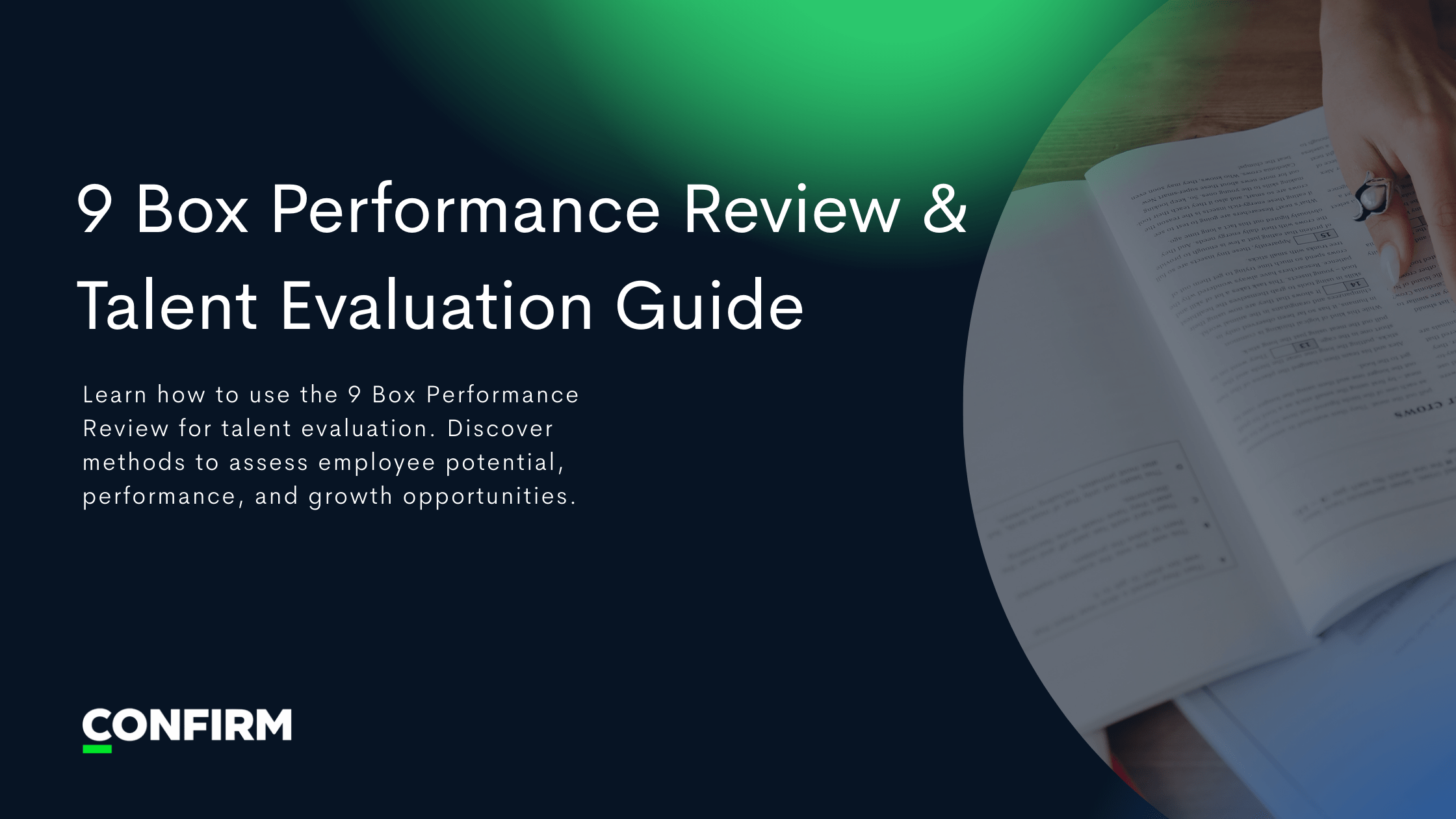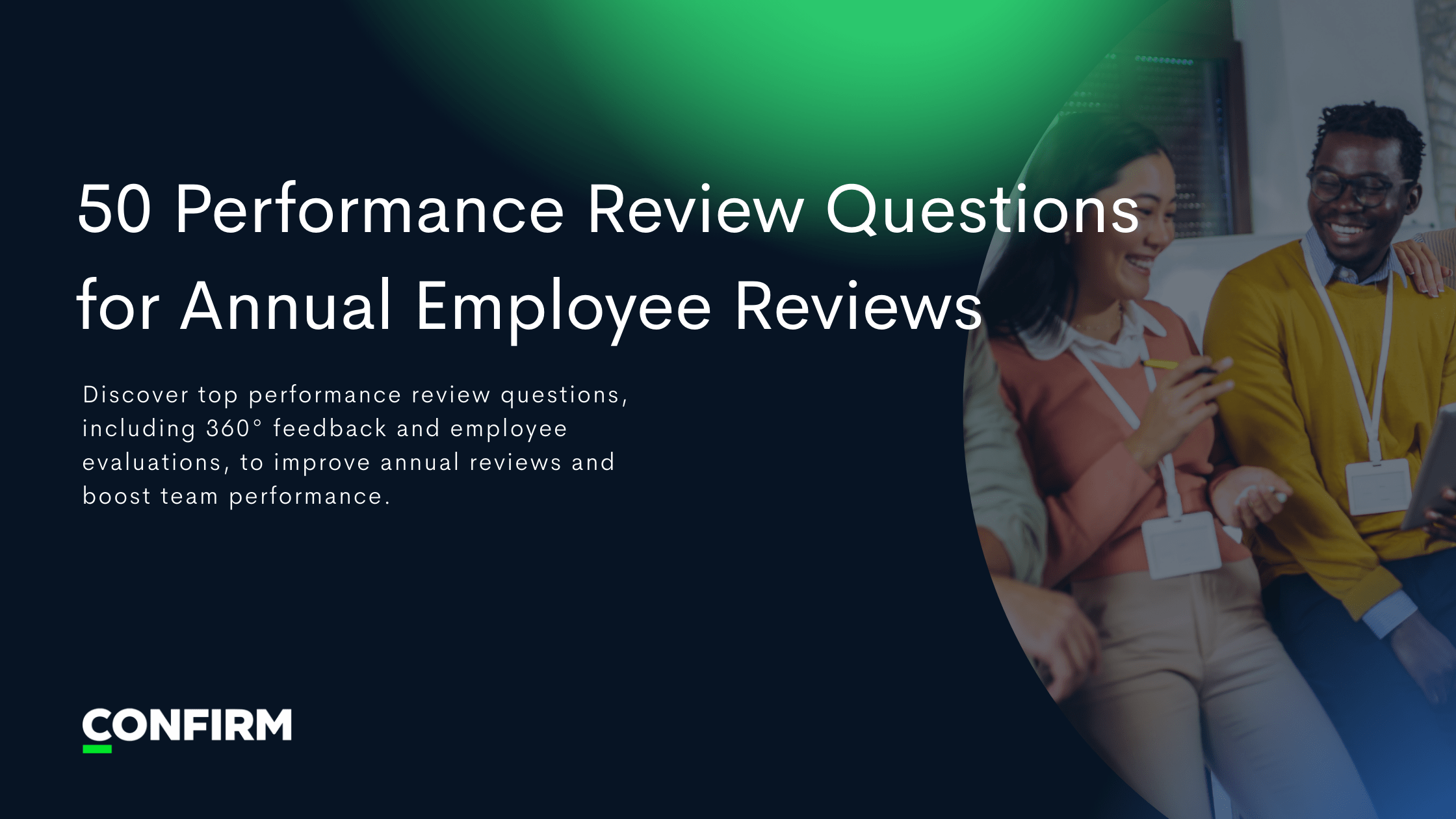
Blog post
Why Traditional Performance Reviews Cost Your Business & How ONA Can Fix It
Why traditional reviews fall short and how ONA revolutionizes talent management for modern businesses.

Rethinking the Traditional Performance Review Approach
Employee performance reviews have long been a cornerstone of the corporate landscape. These annual reviews were designed to assess an employee's work performance, highlighting their strengths and weaknesses. However, as the Harvard Business Review and other notable publications have pointed out, the traditional performance review process is showing its age and inadequacy.
In the past, managers would take the time to sit with team members and provide constructive feedback, often using performance review templates and referencing performance review examples. They'd discuss on the job behaviors, past performance, and areas to improve skills. The grading system used in these reviews, often based on performance ratings, aimed to offer a formal assessment of an employee's performance. The goal was to provide positive reinforcement where due and constructive criticism where improvement was needed.
However, the research shows that this approach has several flaws:
- Mismatch Between Work and Measurement: Today's employees collaborate in global, cross-functional teams, using tools like Slack and Zoom. They're working in networks, yet we're still evaluating their day to day work in hierarchies.
- The Illusion of the Bell Curve: Traditional performance appraisals often produce a bell curve distribution. However, in reality, employee performance follows a power law, meaning a small number of employees, often the high performers, have a disproportionate impact.
- Calibration Biases: Calibration sessions can introduce more biases than they correct. This can result in top performers, who have exceeded expectations, being rated the same as average ones.
With these inherent flaws, it's clear that traditional performance reviews are not only outdated but can also be detrimental to a company's growth and employee morale. So, what's the solution?
Enter Organizational Network Analysis (ONA)
Organizational Network Analysis (ONA) offers a fresh, data-driven approach to performance reviews. By analyzing the relationships and interactions within an organization, ONA provides insights that traditional methods simply can't match.
Benefits of ONA:
- Discover Hidden Talent: In every organization, there are employees who might not be the loudest in meetings or the most visible in day-to-day operations. However, these team members often have a significant impact on business strategy and customer experience. ONA shines a light on these "quiet contributors," ensuring their individual performance doesn't go unnoticed. By recognizing these talents, companies can save time and resources by leveraging their skills effectively.
- Targeted Retention Strategies: High performers are invaluable assets to any company. By using ONA, businesses can identify these top talents and understand their day to day work contributions better. With this knowledge, companies can craft specific strategies to retain these employees, ensuring that their leadership qualities and strong relationships with co-workers continue to benefit the organization.
- Enhancing Retention through Internal Mobility: A significant factor in retaining top talent is providing opportunities for internal mobility. According to a study highlighted by SHRM, employees who have the chance to move within a company, either through transfers to different departments or via promotions, are more likely to remain with that organization. ONA can play a pivotal role in identifying potential candidates for internal mobility, ensuring that employees are placed in roles where they can maximize their impact and continue to grow professionally.
- Minimize Biases: Traditional performance feedback methods often suffer from inherent biases, which can skew an employee's performance evaluation. ONA offers a more objective approach by linking compensation decisions directly to actual performance. This ensures that employee performance reviews are based on data, minimizing the influence of biases and subjectivity.
- Accurate Compensation: Compensation is a critical factor in employee well-being and motivation. With ONA metrics, businesses can ensure that their compensation structures truly reflect an employee's work performance. This means that employees who deliver results and exceed company standards are rewarded appropriately, promoting a culture of meritocracy.
- Spot Skill Gaps: In the ever-evolving business landscape, it's crucial for employees to continuously improve skills and adapt to new challenges. ONA can swiftly identify areas where employees might be lagging, allowing companies to provide additional training or new projects that help bridge these gaps. This not only enhances the employee's work quality but also ensures that the organization remains competitive and agile.
By integrating these terms, the benefits of ONA are highlighted in a manner that emphasizes its relevance and importance in today's corporate environment.
How Does ONA Work?
Organizational Network Analysis (ONA) is a transformative approach that delves deep into the intricate relationships and interactions within an organization. By focusing on the actual dynamics that drive performance, collaboration, and influence, ONA offers a more holistic view of an organization's inner workings.
- Asking the Right Questions: The foundation of ONA lies in posing specific, targeted questions to employees:
- Who do you go to for help and advice? This identifies the knowledge hubs and mentors within the organization, shedding light on employee performance.
- Who energizes or motivates you? This question uncovers the positive influencers and those with strong leadership qualities.
- Who do you see as an outstanding contributor? This highlights the top performers from a peer perspective, those who consistently exceed expectations.
- Who do you believe needs additional support or attention? This can pinpoint potential areas of concern or employees who might be struggling, indicating a need for additional training or new projects.
Understanding Relationships
Beyond these questions, ONA seeks to decipher the deeper relationships within an organization. It's not just about formal hierarchies but about the day-to-day interactions, the informal mentorships, and the team members that truly drive an organization forward.
Painting a Comprehensive Picture
By gathering and analyzing this data, ONA creates a detailed map of interactions, collaborations, and influences. This representation is dynamic, reflecting how employees collaborate and how work quality is maintained.
Data-Driven Insights
Unlike traditional performance reviews that often rely on subjective assessments or performance ratings, ONA is rooted in data. By focusing on actual relationships and interactions, it provides a more accurate and holistic view of an employee's work performance.
Reflecting the Modern Work Environment
Today's work environment is vastly interconnected, with employees collaborating across global teams using various tools. ONA recognizes this shift and measures performance in the way it genuinely occurs: through networks.
Incorporating ONA into the performance review process ensures that assessments are not only accurate but also reflective of the real dynamics within the organization. It recognizes the value of both the vocal leaders and the quiet contributors, ensuring that every employee's accomplishments are acknowledged and rewarded.
ONA in Action: A Case Study
The Business Problem and People Challenges:
A leading clinical research company was on a mission to refine their employee performance review practices, aiming to foster service-oriented skill development. However, they faced a significant hurdle: a lack of clarity on the real top talent within their organization. Their traditional performance reviews were proving inadequate, leaving them in dire need of a more insightful, data-driven approach to assess employee performance.
Why Traditional Processes Failed:
Despite their best efforts, the company's existing performance review process couldn't provide a comprehensive view of their talent pool. They struggled to identify hidden talent and top talent, leading to potential missed opportunities and talent underutilization. The performance ratings they relied on were often skewed, and the performance feedback lacked depth and accuracy.
Choosing ONA for a Solution:
Recognizing the limitations of their current methods, the company turned to Organizational Network Analysis (ONA). This modern approach was designed to unveil hidden contributors and pinpoint areas of concern within organizations, ensuring that employee's accomplishments were accurately recognized.
ONA's Impact Quantified:
By posing specific ONA-based questions to employees, the company was provided with transformative insights:
- Identifying Hidden Contributors: ONA unveiled 2.5 times more top performers and four times more individuals who needed improvement than traditional methods.
- Top Talent Metric: A mere 13% of employees were found responsible for generating 50% of positive outcomes, while another 6% accounted for 50% of the concerns. This data-driven approach allowed the company to make more informed decisions about employee performance and future planning.
- Positive Employee Experience: An overwhelming 95% of employees reported a positive experience with the new performance review process. Many felt that it was a more effective performance review method that truly resonated with their contributions.
- Cost-Effectiveness: The cost savings from retaining just one top performer covered the entire investment in ONA, showcasing a tangible return on investment and the ability to save time and resources.
In essence, ONA provided the company with a holistic view of their talent, enabling them to make smarter, data-driven decisions and revolutionize their approach to performance appraisals. This case underscores the power of ONA in unveiling hidden stars, making data-driven decisions, and truly understanding the dynamics within an organization.
The Bottom Line
Relying on outdated performance review methods can have costly implications. Not only do they risk misidentifying top talent, but they also fail to provide employees with the constructive feedback they need to thrive. Traditional reviews, with their inherent biases and limited scope, often overlook the hidden talent and high performers that drive an organization's success.
Organizational Network Analysis (ONA) emerges as an innovative solution in this scenario. It offers a comprehensive, data-driven approach that captures the true essence of employee performance in the modern workplace. By diving deep into the intricate relationships and interactions within an organization, ONA provides invaluable insights that traditional methods simply cannot match.
For companies seeking to optimize their talent management strategies, the choice is clear. Embracing ONA not only ensures a more accurate and holistic understanding of employee performance but also fosters a culture where every team member's contributions are recognized and valued. In the end, it's about investing in the right talent, fostering strong relationships, and driving organizational success through informed, data-driven decisions.
Frequently Asked Questions (FAQs) about Organizational Network Analysis (ONA)
1. What is Organizational Network Analysis (ONA)?
Answer:
ONA is a data-driven approach that analyzes the relationships and interactions within an organization. It provides insights into how employees collaborate, communicate, and influence one another, offering a more comprehensive view of the organization's dynamics than traditional performance review methods.
2. How does ONA differ from traditional performance reviews?
Answer:
Traditional performance reviews often rely on subjective assessments, manager feedback, and set templates. ONA, on the other hand, focuses on actual employee interactions and relationships, providing a more objective and holistic view of an employee's impact within the organization.
3. Why is ONA considered more accurate?
Answer:
ONA minimizes biases by focusing on actual data and interactions within the organization. It captures the true essence of how employees collaborate, communicate, and influence, ensuring that both vocal leaders and quiet contributors are recognized for their contributions.
4. How can ONA benefit my organization?
Answer:
ONA can help organizations identify hidden talent, develop targeted retention strategies, minimize biases in performance assessments, ensure accurate compensation, and spot skill gaps. This leads to better talent management, improved employee morale, and overall organizational growth.
5. Is ONA suitable for all types of organizations?
Answer:
Yes, ONA is versatile and can be adapted to organizations of all sizes and across various industries. Whether you're a startup, a multinational corporation, or a non-profit, ONA can provide valuable insights into your organizational dynamics.
6. How often should an organization conduct ONA?
Answer:
The frequency can vary based on the organization's needs. However, many companies find value in conducting ONA annually or bi-annually to keep track of changing dynamics and ensure that their talent management strategies remain effective.
7. Does ONA replace the need for traditional performance reviews?
Answer:
While ONA provides deeper and more accurate insights, it doesn't necessarily replace traditional reviews. Instead, it can complement them, ensuring that performance assessments are both comprehensive and data-driven.
8. How do employees feel about ONA?
Answer:
Employees appreciate the objectivity and fairness that ONA brings to performance assessments. It ensures that their contributions, both big and small, are recognized, leading to increased job satisfaction and morale.
9. Is ONA cost-effective?
Answer:
While there's an initial investment in implementing ONA, the insights gained can lead to better talent management, retention of top performers, and overall organizational growth. In many cases, the benefits of ONA far outweigh the costs.
10. How can I implement ONA in my organization?
Answer:
Start by identifying your organization's specific needs and challenges. Then, seek out tools or consultants specializing in ONA to guide you through the implementation process. With the right approach, ONA can become a cornerstone of your talent management strategy.
Ready to see Confirm in Action?
See why forward-thinking enterprises use Confirm to make fairer, faster talent decisions and build high-performing teams.










